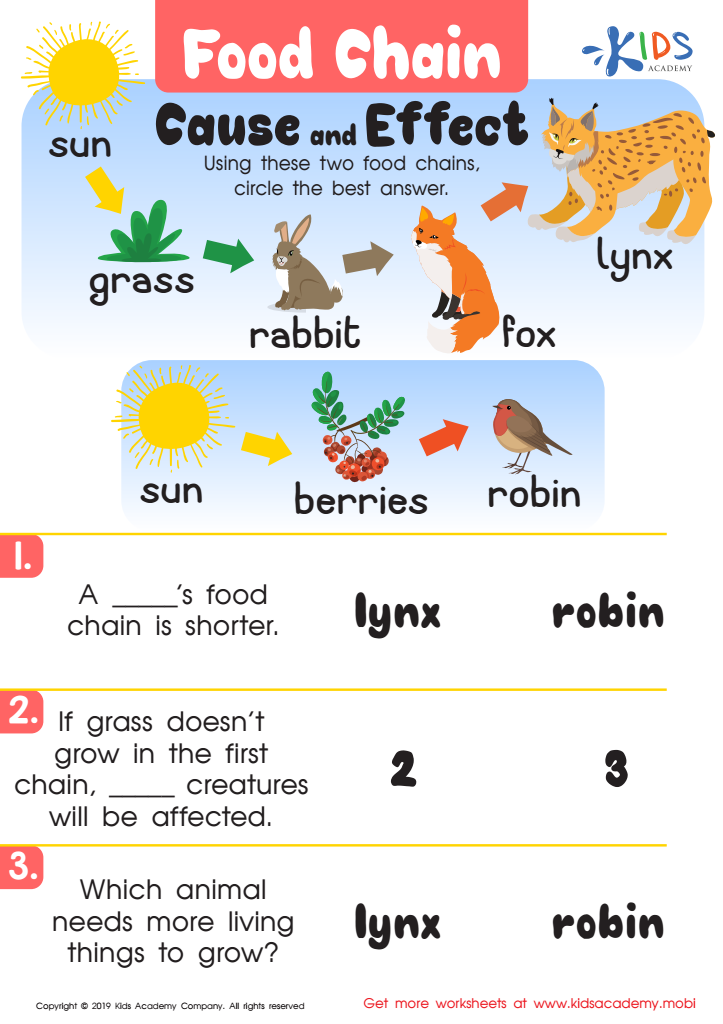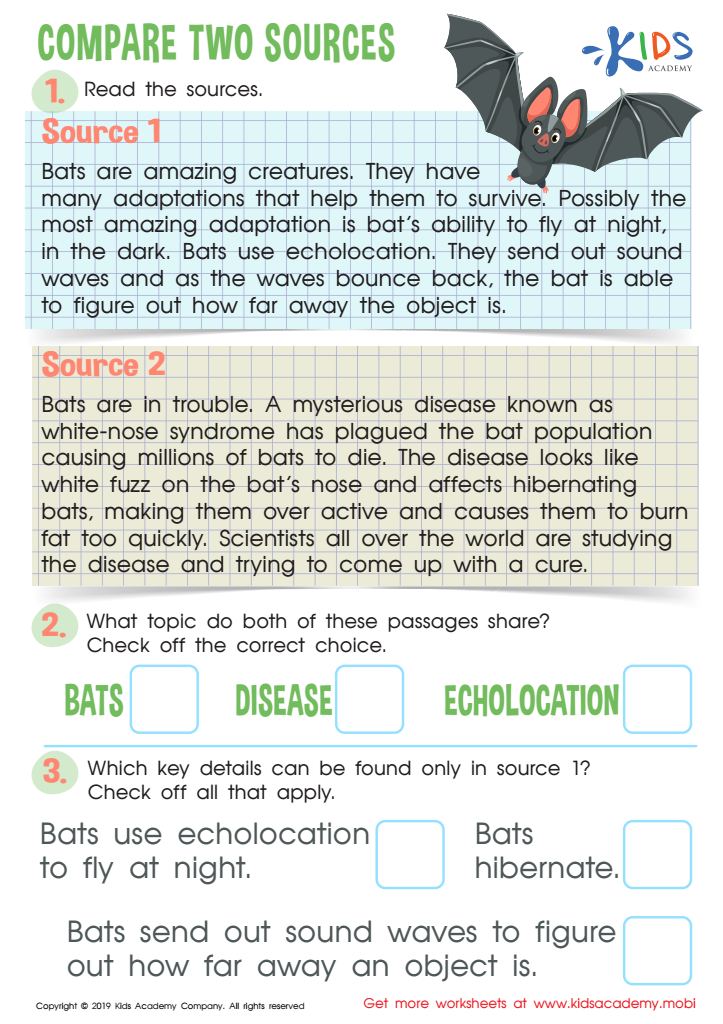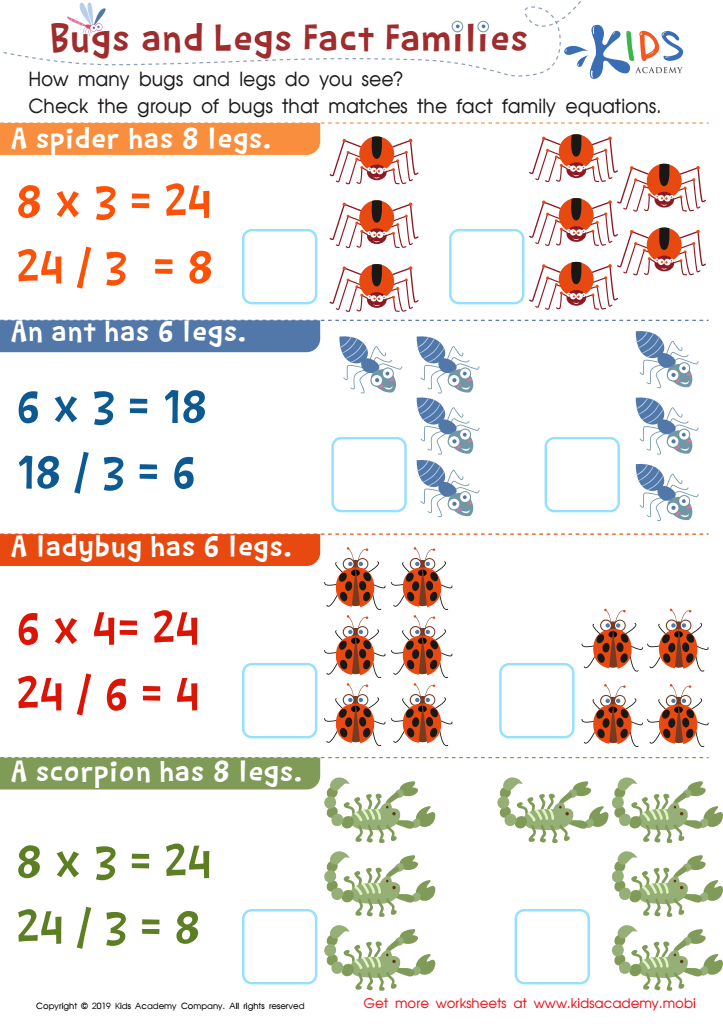Normal Plants and Animals Worksheets for Ages 6-8 - Page 5
99 filtered results
-
From - To


Food Chain Cause Worksheet


Compare Two Sources Worksheet


Bugs and Legs Fact Families Worksheet
Parents and teachers should care about normal plants and animals for children aged 6-8 because these basic concepts serve as foundational elements for young learners. At this age, children are naturally curious and eager to explore the world around them. Understanding normal plants and animals enhances their appreciation for nature, fosters curiosity, and nurtures a sense of responsibility toward the environment.
Learning about local flora and fauna promotes observational skills and encourages kids to engage with their surroundings. Exploring normal plants can lead to discussions about ecosystems, growth, and the importance of biodiversity. Similarly, understanding animals in their habitats helps children grasp concepts related to food chains, adaptation, and environmental stewardship.
Furthermore, knowledge about plants and animals can stimulate children's imaginations and creativity, often inspiring art projects, stories, or outdoor adventures. Nature-based learning also provides opportunities for hands-on experiences, which reinforce academic concepts through tangible interactions.
Incorporating these themes into their learning not only enriches their education but also promotes a lifelong appreciation for nature. Ultimately, fostering this early curiosity supports the development of informed, caring individuals who recognize the importance of protecting our planet and its diverse inhabitants.
 Assign to My Students
Assign to My Students














